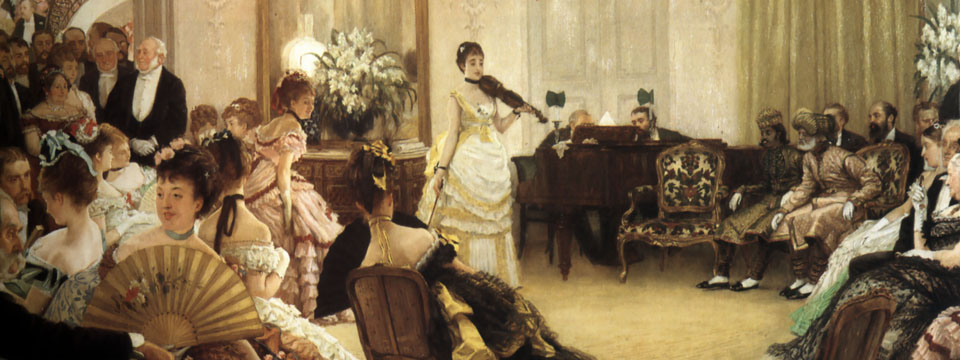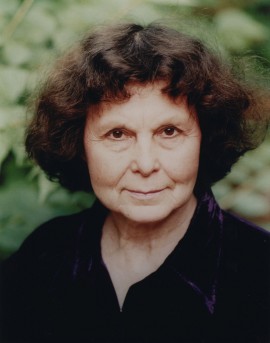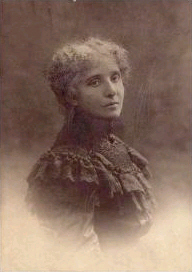
The prolific French composer, Mélanie Hélène Bonis, wrote more than 300 compositions. She was ultimately forced to stop writing due to an arranged marriage to a conservative husband.
At the next formal meeting of the AAAPTG (April 21, 9:30 a.m.), Performers Group members will be highlighting a collection devoted to women composers acquired by the University of Michigan music library in the early 80’s which has recently been converted to convenient online access. The “Women Composers Collection” contains over 3000 works by about 750 composers writing in the late 18th through early 20th centuries. Especially represented is “salon” music, with songs for voice and piano, piano solos, and small chamber pieces being the lion’s share of collection. However, it also features many large-scale works – sonatas, concerti, cantatas and opera – especially in the later years that are represented.
The program on the 21st features works by Agathe Backer-Grøndahl (1847-1907), Cécile Chaminade (1857-1944), Henriette Mennechet de Barival (1815-1861), Hedwige Gennaro-Chrétien (1859-1944), Mélanie Bonis (1858-1937), Dorothy Howell (1898-1982), Nadia Boulanger (1887-1979), Louise Talma (1906-1996), Wanda Landowska (1879-1959), May Frances Aufderheide (1888-1972), and Julia Lee Neibergall (1886-1968). Included will be solo piano works – nocturnes, toccata, preludes, tarantella and rags – plus a piano duet and cello/piano duo.
Now then this is about the time when someone pipes up with the perennial question: “So where are the lady Beethovens anyhow?”
Well, consider these two quotations–
“There are no women of genius; the women of genius are men.”
– the Goncourt brothers, Jules and Edmond, written in their Diaries-circa 1863.
“So my best guess… of what’s behind all of this is that in the special case of science and engineering, there are issues of intrinsic aptitude.”
-Former Harvard President Larry Summer in 2005 (explaining why women seem underrepresented in science and engineering at top university and research positions).
It seems that the more things change, the more they stay the same. Of course, in 2005 Larry Summers got into a heap of trouble with his comments while in the 1800’s the Goncourts went unchallenged. Still, this question hangs in the air even today. Where are the great female composers – as well as the great female scientists, mathematicians, visual artists, philosophers? Thousands of words have been spent, six ways to Sunday, to come up with an answer. And unfortunately there is a fine line between explaining and apologizing or making excuses.
So, since women don’t need apologies or excuses, what about turning this question inside out to ask: “why are there any Beethovens – or Chopins, Bachs, Einsteins, Edisons, Shakespeares, and Michaelangelos – at all?” How does that even happen?
Perhaps the first thing to understand about being a great artist or a great anything is that it is very hard. The second is that it is rare.
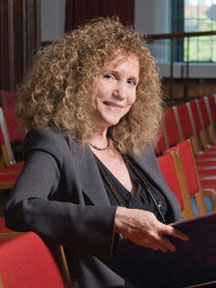
Shulamite Ran (1949-) received the Pulitzer for her Symphony. Critics have acclaimed her work as “written with the same sense of humanity found in Mozart’s most profound opera arias….”
Talent itself is not that uncommon–but the kind of talent plus drive that spells great achievement is more than that. It is a “calling.” Israeli-American composer Shulamite Ran (1949-) says she knew from the age of 8 that she wanted to compose music.” My teacher sent some of those melodies to a local radio station and they ended up being performed on the radio by a children’s choir…. I was eight at the time and away at summer camp; there we all were…. all sitting around a large radio listening to my music coming out of it. That was a revelation for me…. I’ve never wanted to do anything else but compose ever since.” Psychologist Karl Jung described it as “a kind of innate drive that seizes a human being and makes him its instrument.”
However, even a calling needs the right conditions, the right soil. And first and foremost is access to a good education and to the right mentors and support. Here is where, historically, women hit a big snag.
In the past, women did not usually get a good education if any at all. Even in the upper classes, women did not go to, say, Oxford or Cambridge. They received a limited amount of tutoring that included such essentials as embroidering and manners. Celebrated French author, “George Sand” (Aurore Dudevant; 1804-1876), was an exception in that her father gave her what was considered a male education. In the visual arts, Germaine Greer, in her 1979 book The Obstacle Race, relates that in earlier years, no female could have been a painter without a father, brother, or significant male in their life who was one. Famous Baroque painter Artemsia Gentileschi (1503-1656) learned in her artist father’s workshop. French composer Cécile Chaminade(1857-1944), though not allowed by her father to attend the Conservatory did receive tutoring in piano and composition. The extraordinary Hildegard von Bingen (1098-1179), writer, composer, philosopher, Christian mystic, visionary, and just all around genius had to “get thee to a nunnery” in order to get the education and support she needed.
Russian composer Sofia Gubaidulina (1931-) was told she was following a “mistaken path” by her professors at the Moscow Conservatory. But in 1959, she met Shostakovich who praised her work and said: “My wish for you is that you should continue on your own incorrect path.” “I am grateful the whole of my life for those wonderful words,” she says. “They fortified me and were exactly what a young composer needed to hear from an older one. It gave me the courage to follow my own path.”
Social roles, expectations, demands, prejudices, and class all presented difficult challenges to women. We understand this now, but it is interesting to observe instances where they also affected men. For example, Sergei Rachmaninoff’s grandfather, Arkady Rachmaninoff,who by all accounts was a magnificent pianist, practiced 4 hours a day and had even studied with John Field. But because of his station in life, as an aristocratic landowner in old Russia, it was not considered seemly for him to pursue performing beyond an occasional charity benefit. Great jazz bassist, Charles Mingus (1922–1979) trained to be a classical cellist but had to abandon that dream due to the general racism of the time which precluded him from having a chance at such a career. Actually from these cases of male restriction, it becomes clear that many of the barriers are structural and not some gender specific “failing”.
In the cult of talent, it can be forgotten that creating something great is a whole ton of work. Thomas Edison of “genius is one percent inspiration and 99 per cent perspiration” fame sets us straight on that notion: “Opportunity is missed by most people because it is dressed in overalls and looks like work.”
One of the best statements on the hard work of creativity was written by Edgar Allen Poe in his “Philosophy of Composition”:
“Most writers….prefer having it understood that they compose by a species of fine frenzy…and would positively shudder at letting the public take a peep behind the scenes… at the cautious selections and rejections – at the painful erasures and interpolations…. It is my intention to render it manifest [referring to his modus operandi in “The Raven”] that no one point in its composition is referable either to accident or intuition — that the work preceded step by step to its completion with the precision and rigid consequence of a mathematical problem.”
The role of dogged persistence, perseverance, and determination even in the face of rejection cannot be overestimated. Think of the eighteen year old J.S. Bach walking 150 miles each way to hear and study the work of Buxtehude. Consider Michelangelo lying on a scaffolding for four years as he painted the Sistine Chapel – distorting his body and nearly going blind from the paint dripping into his eyes. Or Van Gogh who sold only one painting in his lifetime – and not for the millions they now command but for about $100 dollars. Schubert worked constantly in the shadow of Beethoven while Sofia Gubaidulina, arguably the greatest composer of the late 20th century, who stuck to her guns, her “mistaken path,” survived an attempted “whacking” in an elevator by the KGB because she wouldn’t tow the Soviet Party line. One must have the fire in the belly, more persistence than even Adobe Updater.
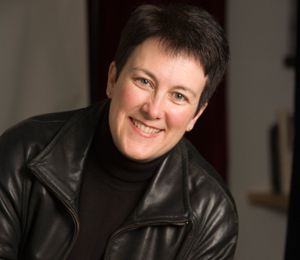
Pulitzer prize winner Jennifer Higdon (1962-) is a major figure in contemporary Classical music. Higdon’s orchestral work, “Blue cathedral”, is one of the most performed contemporary orchestral compositions by a living American.
So, what about some kind of mathematical formula to account for who makes it through such a maze. Maybe a numerical value could be assigned to all the necessary traits and situations that must align while deducting for the various and sundry obstacles. Something like Great Achievement equals Talent, Drive, Access, Persistence, Determination, Work capacity minus Obstacles such as lack of educational opportunity, social class, gender and racial prejudices etc. Or something like:
T+D+A+P+De+W-Ob=GA
Sort of like a “unified field theory” of art–that would fit on the front of a t-shirt.
Then, we could perhaps turn our attention to other equally perplexing questions-like where are all the Hawaiian Olympic down hill skiers or the champion Bedouin surfers?
– Katherine Teves Mizruchi

